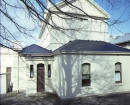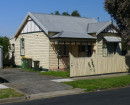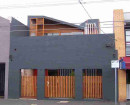BICKLEIGH VALE
5-27 BICKLEIGH VALE ROAD AND 2-28 BICKLEIGH VALE ROAD AND 112-142 CARDIGAN ROAD AND 9-23 PINE ROAD AND 80-106 PEMBROKE ROAD AND 1-9 EDNA WALLING LANE AND 2 EDNA WALLING LANE MOOROOLBARK, YARRA RANGES SHIRE
-
Add to tour
You must log in to do that.
-
Share
-
Shortlist place
You must log in to do that.
- Download report


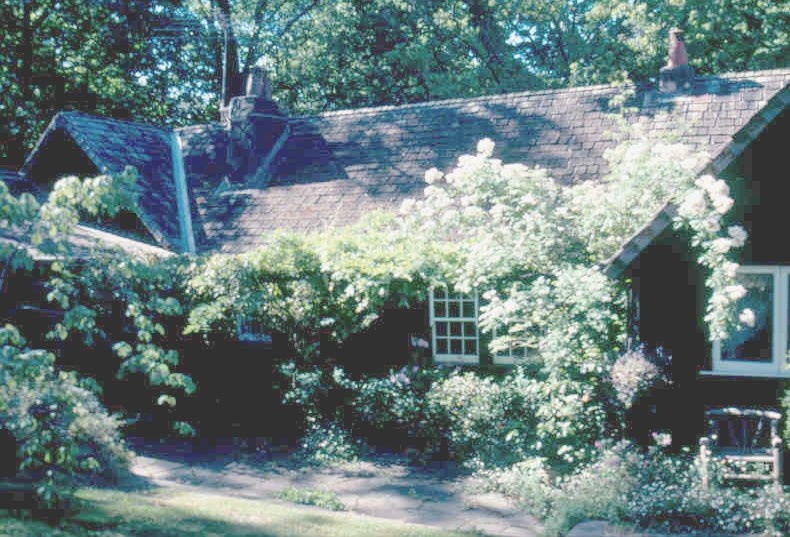




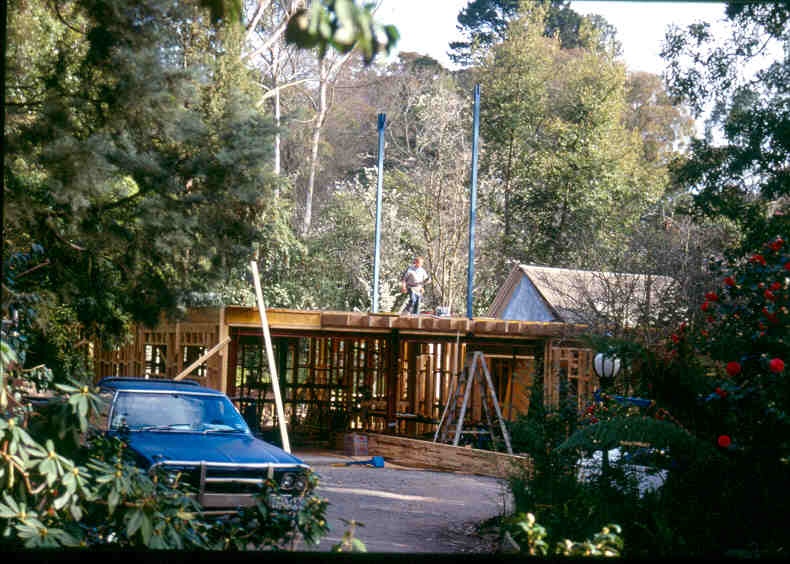




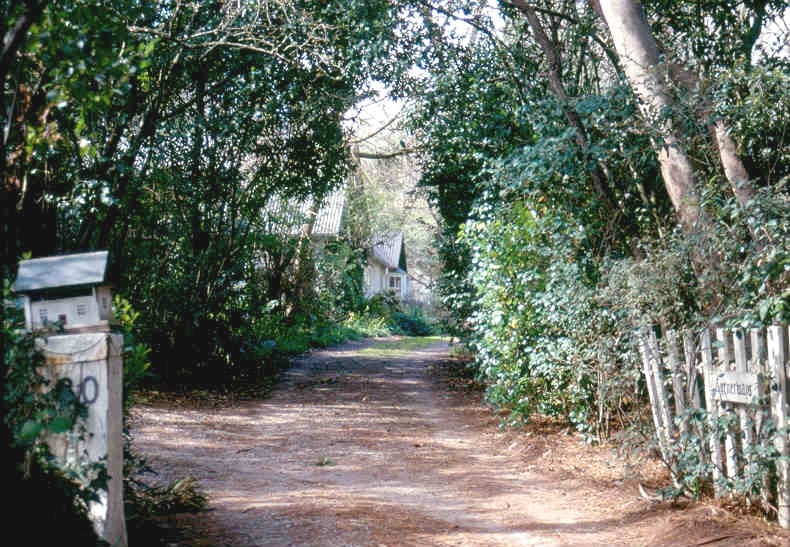













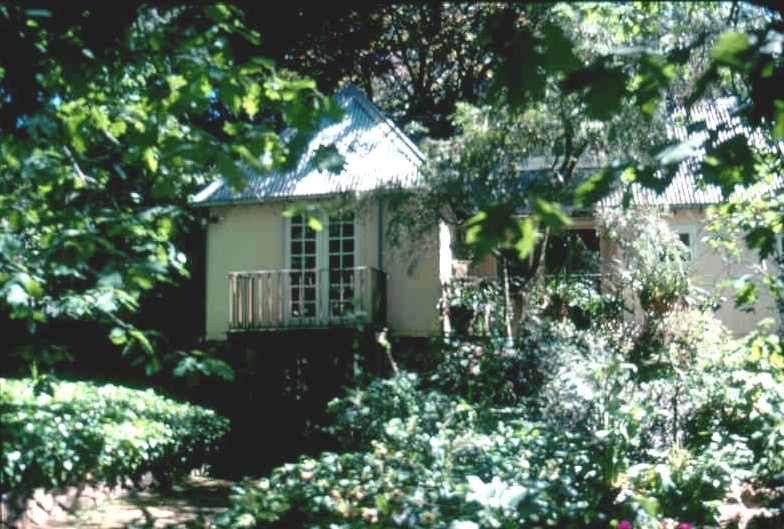
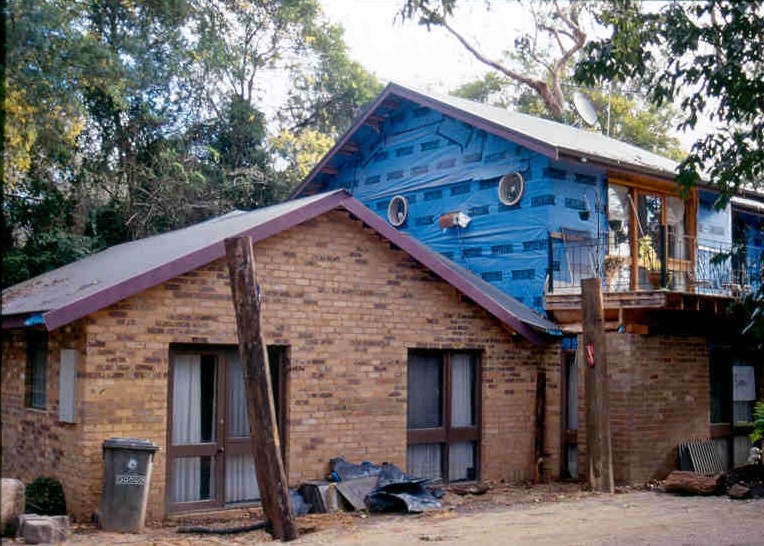

Statement of Significance
What is significant?
Bickleigh Vale is a landscaped village of approximately 10ha created in the 1920s by leading Australian landscape gardener and designer Edna Walling (1895-1973). Bickleigh Vale was developed around Walling's own residence, 'Sonning' built in 1921 and her studio 'The Cabin'. Walling lived in the village for most of her working life, moving from 'Sonning' to 'The Barn' in 1951, before moving to Queensland in 1967. Bickleigh Vale was named after the village in Devon, England where Walling was raised.
The village was developed from the 1920s in a consistent style by Walling and a group of likeminded purchasers until the 1950s, whilst subsequent subdivision has created more than 30 properties. The design of all allotments in the first few decades was closely controlled by Walling, and part of the 'Sonning' garden was used by Walling as a nursery from which plants were supplied to purchasers. Many of Victoria's most influential landscape designers including Eric Hammond, Ellis Stones and Glen Wilson gained experience working in the village.
The landscape character is of densely planted trees and shrubs across the gently undulating topography into which cottages and roads have been constructed. The mature enclosed landscape allows only glimpses of the cottages and houses behind the plantings and sloping land. The planting is diverse and includes old remnant gums, and introduced evergreen trees and shrubs that provide contrasts of leaf and flower colour, and form and texture throughout the seasons. The landscape design includes stone walls, steps, ponds, arbours, flagstones and gravel drives, and richly planted gardens. Low front fences of timber, stone or wire occur, and some properties have place names fixed to gates or fences. An important feature of the village is the use of wire fences covered in shrubs and climbers to provide a continuous uninterrupted landscape amongst the cottages and houses.
The landscape retains indigenous Blackwood (Acacia melanoxylon) and gums, including Eucalyptus macrorhyncha, E. rubida, E. goniocalyx, E. melliodora, E. obliqua, E. ovata, E. radiata, E. cephalocarpa and E. viminalis. Exotic plants were introduced into the remnant vegetation and include conifers, deciduous and evergreen trees, shrubs, perennials and bulbs, and many Australian natives that are a feature of Walling gardens. Of the larger growing trees there are numerous pines (Pinus), oaks (Quercus), cypress (Cupressus), cedar (Cedrus), elms (Ulmus), poplars (Populus), ash (Fraxinus) and gums (Eucalyptus and Corymbia). The earliest introduced plantings were pines, and numerous Monterey Pines (Pinus radiata) occur along Pine Road and Bickleigh Vale Road, and throughout the estate. Also along Bickleigh Vale Road are several uncommon Bishop's-cone Pine (Pinus muricata). Other conifers of contrasting form have been planted including Monterey Cypress (Cupressus macrocarpa), Golden Cypress (C. macrocarpa 'Horizontalis Aurea'), Bhutan Cypress (C. torulosa), Mexican Cypress (C. lusitanica), Smooth-barked Arizona Cypress (C. glabra), with blue-green foliage, and the narrow crowned Italian Cypress (C. sempervirens).
The Walling 'signature' plants widely planted at Bickleigh Vale include Acacia, Acer palmatum, Acmena, Abelia, Amelanchia, Arbutus, Betula, Berberis, Buddleja, Buxus, Camellia japonica, Camellia sasanqua, Carpinus, Catalpa, Chaenomeles, Chimonanthus, Choisya, Cornus, Cotinus, Cotoneaster, Crataegus, Diospyros, Duetzia, Eleaegnus, Enkianthus, Forsythia, Hydrangea, Jasminum, Kerria, Kolkwitzia, Laurus, Leptospermum, Ligustrum, Liquidambar, Liriodendron, Lonicera, Malus, Magnolia Nandina, Osmanthus, Philadelphus, Photinia, Pittosporum, Populus, Prostanthera, Prunus, Prunus lusitanica, Pyracantha, Pyrus, Rhaphiolepis, Spiraea, Syringa, Viburnum, Wisteria; and Helleborus, Anemone, Agapanthus, Viola, rose cultivars and numerous bulbs, including Nerine, Ixia, Sparaxis, Narcissus, Hyacinthoides, Leucojum, Iris, and Muscari.
The houses and outbuildings that were designed or approved by Edna Walling in what she termed 'the English style' include her own home 'Sonning' which was rebuilt in 1936 following the destruction of 'Sonning I' in a fire, 'The Cabin' (now 'Sarn'), 'Lynton Lee', 'Cornerways', 'Mistover', 'The Barn', 'Downderry', 'Hurst', 'The Sheilan', 'Glencairn', cottage at 11 Bickleigh Vale Road, 'Badgers Wood', 'Wimborne', 'Braemark', guest cottage and workshop at 138 Cardigan Road (formerly part of 'Braemark'), 'Winty' and 'Bena Lodge'. All have a harmonious combination of design elements such as rustic stone on lower levels, dark stained shingles on upper gable ends, simple multi-paned casement windows, dormer windows, prominent stone chimneys, and French doors opening onto patios with attached stone and timber pergolas.
How is it significant?
Bickleigh Vale is of aesthetic (landscape), scientific (horticultural), historical and architectural significance to the State of Victoria.
Why is it significant?
Bickleigh Vale is of aesthetic (landscape) significance as the major work of its creator, the gifted and single-minded landscape designer Edna Walling. Walling received her certificate from Burnley Horticultural College at the end of World War One and was one of the first women to establish a successful garden design practice. Her reputation was enhanced by her regular gardening column in the Australian Home Beautiful which popularised her ideas about gardens and their designs. The village survives as her largest single creation, and is significant for the retention of much of the landscape character as planned by Walling, and the survival of many cottages created or approved by Walling, as well as garden plantings inspired by Walling's writings and designs. The aesthetic quality of the landscape includes the apparently casual nature of the internal lanes, the character of the mature plantings, the continuous nature of the landscaping which permits glimpses of carefully sited cottages, and the complementary relationship between exotic and Australian plants.
Bickleigh Vale is of scientific (horticultural) significance for its many outstanding trees and plantings, including stands of rare oaks and other deciduous varieties. Numerous plants occurring at Bickleigh Vale were popularised by Edna Walling. Individual properties have plantings of horticultural and landscape value. This includes the following outstanding or rare oaks; two Quercus bicolor at 'Sonning' and another tree at 'The Barn', Quercus macrocarpa and Q. acutissima at 'Glencairn', a rare Quercusstellata at 'Sonning' and a very large Quercus ilex at 'The Barn' and 2 Quercus rubra at 'Winty'. In the 'Lynton Lee' garden are Quercus 'Macedon', Q. rubra, Q. macrocarpa, Q. nigra and Q. canariensis. Other outstanding deciduous trees are wide spreading Golden Elms (Ulmus glabra 'Lutescens') at 'Badgers Wood', an outstanding Zelkova serrata at 'Glencairn', an Algerian Oak (Quercus canariensis) at 'Locharden', and a large Hornbeam (Carpinus betulis) at 11 Bickleigh Vale Road. Both 'Sonning' and 'Lynton Lee' have impressive stands of Silver Birch (Betula pendula), and 2 Amelanchier canadensis at 'Winty', both popular Walling plantings. 'Lynton Lee' also has an uncommon Himalayan Pine (Pinus wallichiana), and at 'Badgers Wood' there is a wide spreading Hawthorn (Crataegus sp.) and at 'Locharden' a large stand of Tea-tree (Leptospermum sp.)'
Walling's own garden at 'Sonning' is significant for being largely intact with a wide variety of trees and shrubs including Sequoiadendron giganteum, Sequoia sempervirens, and Cupressus torulosa, beside the entrance gate, Pseudotsuga mensiezii and an outstanding Chamaecyparis funebris. 'The Cabin' has an impressive Callitris glaucophylla, and at 'Wimborne' there is a fine Chamaecyparis lawsonniana. Of horticultural significance are the Malus x purpurea 'Sonningensis' a crabapple selected about 1936-40 by Edna Walling from her garden 'Sonning' and planted at 'Lynton Lea' and 'Mistover'. There is a fine example of Rosa 'Edna Walling', a rose named in her honour, growing over the front of 'Glencairn'. 'Glencairn' also has an unusual moss lawn.
Bickleigh Vale is of historical significance for being conceived and developed some years before Walling gained recognition and achieved commercial success as a gardener. The subdivision plan, influenced by Walling is largely retained and is reflected in the spatial disposition and generally low density of residences, the major boundary plantings and fence lines, and the boundaries of roads and lanes. Bickleigh Vale attracted a small community of her female friends who lived at various times in the different cottages and houses. The Village is an extraordinary experiment in urban design and was during and beyond her lifetime an inspiration for her followers.
Bickleigh Vale is of architectural significance for the design of the cottages and houses, particularly for the harmonious combination of materials. Also of architectural significance are the hard landscape elements including ponds, stone walls, paving and other works which complement the design of the cottages and which together with the cottages exemplify Walling's individual and original approach to a unified and integrated cottage-village design ideal. Although many of the original cottages have been extended or altered, all retain significant Walling influence.
-
-
BICKLEIGH VALE - History
HISTORY OF BICKLEIGH VALE
http://www.nattrust.com.au//register/viewreg.cfm?register_id=39
30 May 1894: James Hewish, crown grantee, Part CA 23A2 , Parish of Mooroolbark, County of Evelyn, 112a 3r 36p, file 754/19.20; Pembroke Road and Cardigan Road created at about this time to service local land selectors.
30 October 1916: subdivision LP7493 of 112 acre site into 33 allotments by surveyor Henry Parsons; creates Pine Road [LP7493]; 31 December 1916: subdivision approved by Shire of Lillydale [LP7493]
24 February 1917 John Edmond Taylor of Lansell Road, Toorak and Australias Sharp of City Road, South Melbourne, gentlemen are joint proprietors of Crown Allotment 23A2 (less a narrow portion comprising an easement for the O'Shannassy pipeline running from Olinda Reservoir to Mitcham Reservoir), in total almost 110 acres [Certificate of title, vol 4024 fol 804798]
1921-27 Sale in separate allotments (or groups of allotments) of the original 110 acre holding of Taylor and Sharp; Taylor dies 17 December 1943 (he was predeceased by Sharp); remaining section of land transferred by Taylor's beneficiaries to William Ubsdell Ballantyne and Katherine Bryndwyr Ballantyne on 5 October 1944 - this comprised just over 23 acres south of the O'Shannassy easement (now in the vicinity of Greenwood Lane and Mountain Drive) [vol 4024 fol 804798]
1921: apparent purchase of 3 acres by Edna Walling (but not a registered land dealing). 'In 1921 Edna Walling built the first cottage on land she had purchased at Mooroolbark. She named it "Sonning" after a village in the Thames Valley ...' [Margaret Barrett (ed), The Garden Magic of Edna Walling, Anne O'Donovan, 1988, p.13; Watts, p.23]; In her History of Croydon (1967) Muriel McGivern quotes a date of 1922, apparently gleaned first hand from Walling (who was then still living at Bickleigh Vale)
'1920s': Sonning One, illustrated in Australian Home Beautiful, March 1940, p.7
1924: Transfer by Taylor and Sharp of 5 allotments to Emily Rosa Whisson of Lilydale Coffee Palace and 1 allotment to Hector Whisson.
1924: Edna Walling and Katherine Ballantyne, 'Landscape gardening in Victoria', The Home, 1 December 1924, p.? (6 photographs by Adamson, including 'Out of the stone of the countryside Miss Edna Walling has built for herself this picturesque home at Mooroolbark') and 'The garden landscape in Australia', The Home, 1 December 1924, p.37: 'Here are some landscapes planned Miss Edna Walling, at Melbourne and Victorian homes.'
14 November 1927 Transfer of lot 26, LP 7493 (the Sonning allotment) from Taylor and Sharp to Edna Margaret Walling [vol 4024 fol 804798]
February 1928: 'Sonning: a nursery garden at Mooroolbark' Australian Home Beautiful, February 1928, pp.48-49 (copy on NT file): Plan of the Sonning allotment 'rather in the nature of a forecast than a record'.
7 September 1928: Caveats lodged over Whisson land, possibly the date when Walling gained some form of tenure or interest. [Caveats 77119, 77146, now destroyed]
11 October 1928: '...called the place Bickleigh Vale', note in diary of Blanche Sharpe (later Marshall), friend and bookkeeper of Edna Walling, quoted in Dixon and Churchill, Gardens in Time: In the footsteps of Edna Walling, 1988, p.2.
1929: 'Beauty in Outbuildings', Woman's Mirror, 1929?, copy on NT file, refers to Good-a- Meavy (later The Barn):
With the desire to prevent the erection of any more unsightly buildings similar to those on my own property, I sketched for a neighbour a little plan of a stable, garage, feed and harness-room, with workshop or man's room above. Into this sketch was embodied her [?who - not disclosed, possibly Blanche Sharpe] especial desire to have an opening right through the centre of the building to a courtyard beyond. Sufficient of the framework of the building is now constructed to show how delightful this idea is proving ... The building has been so placed as to be right on the south boundary of the property, and in such a position that the archway comes in the centre of the lane by which the farm is approached. The lane is on the east of some beautiful gums and blackwoods, and is, therefore, cool and shady in the afternoon. Through the archway one may glimpse the fine old gum-tree that is 30 ft or so from the north side of the building. It is between this tree and the building that the stone-paved courtyard will be. This seeking after the picturesque comes generally from the woman. Practical suggestions made when new buildings are being contemplated would not often be altogether rejected; they might, indeed, result in the creation of outbuildings that would be an aesthetic asset to the farm. The farmer will see to it that the asset is a practical one.
November 1930: Article in Australian Home Beautiful by Edna Walling, 'Adventure in Landscape Gardening (p.24) illustrates 'Scheme for the division of land into five blocks, adjoining Sonning at Mooroolbark'. Covers lots 1, 2, 22, 23, 24 and 25 as well as lot 26 (Sonning) - plan dated September 1930.
...those rolling acres that I coveted so long came into my possession ... [and are] available to those who long to build themselves a quaint little English cottage surrounded by sturdy young trees and shrubs of their own planting ... In one corner a nursery has been formed, roughly, an acre in extent. Here the trees and shrubs are being raised for making landscape pictures. Here plants selected from other nurseries as being suitable for this adventure are brought to be grown into larger specimens ... Water - the most important of all factors in a country habitation, is available from the O'Shannassy water scheme ... As much of the land as it was possible to plough has been cultivated and sown down with oats to open up the ground ... The remaining land has grey or woolly tea-tree and white swamp gums scattered about in picturesque groups ... It should be emphasised that these blocks are only for those interested in English cottage design, the planting of trees and shrubs and the preservation of the existing landscape. (pp.24-25)
5 March 1933, survey by David Oliver creates 18 allotments, also creates Bickleigh Vale Road, approved by Shire of Lillydale 27 March 1933, Plan of subdivision 13762, vol 4820, folio 963823-4. Surveyor listed as David Houston Oliver, Shire Hall, Lilydale.
c.1930-33? Undated and unsourced newspaper article (c.1930-33?), copy on NT file, Edna Walling interviewed by K. Tucker:
Asked to explain her village scheme, Miss Walling said, I am deeply interested in this, as I have a keen sense of building, and love this side of my work. The village takes a great deal of my time. It is built on land next door to me [i.e. next door to Sonning], which I purchased recently, and consists of 17 blocks, five of which are already built on. I call it Bickleigh Vale. The cottages are mostly built in the English style, with steep sloping roofs, and the gardens have as many trees and shrubs as possible, because I love them and wish to encourage people to have them. I have planned several country cottages. Of course, my plans are not as full as those of an architect would be, but a rough sketch with elevations marked has been found sufficient for a country cottage. Of course, only a good builder could build from these plans. I run a nursery for plants I need for the gardens I am looking after, as it is often difficult to get just what is needed. It also supplies the trees and shrubs for Bickleigh Vale and is very useful for bringing young plants on.
1934: First transfers of land with the special Walling covenant, ensuring that the design of buildings were by her, or met with her approval. The first two such transfers were at the corner of Bickleigh Vale Road and Pembroke Road (to Emily Hansen and Grace Hughston).
Winter 1935: Sonning destroyed by fire [Australian Home Beautiful, March 1940, p.7]
8 April 1935: Purchased of allotment in Pine Road by Lorna Fielden (the Lynton Lee site), transfered by Rosa Whisson but with the special Walling covenant.
16 October 1935, certificate of title vol 6009 folio 1201619, shows Edna Margaret Walling owner of lots 2, 5, 6, 7, 9, 10, 11, 12, 13, 14, 15, 16, 17 and 18 and a road on plan of subdivision.
January 1936: Edna Walling, 'The building of Sonning 2', Australian Home Beautiful, January 1936, pp.32-35 [some pages missing]. 'Sonning 2 is complete, and it is much the same in its outward appearance except for an added respectability, which I secretly regret.' (p.32) Sonning 2 illustrated in Australian Home Beautiful, March 1940, p.7
4 June 1936: Transfer from Walling to Lorna Fielden (with special covenant) of an allotment in Pembroke Road (No. 86).
18 December [c.1936? year not shown on copy], unsourced and imprecisely dated newspaper cutting, copy on NT file:
Miss Walling lives at Mooroolbark, 20 miles from Melbourne, and as a spare-time hobby has built a village. For a mere hobby this sounds exactly what it is - a breath-taking achievement. Doubly emphasised, moreover, when one has visited the Bickleigh Vale cottage scheme, and viewed the beauty of the seven cottages already in existence in their mountain setting. Miss Walling made her home at Mooroolbark a number of years ago, the grounds of her cottage, "Sonning", embracing four acres of delightfully undulating bush-clad country. In the intervening the native trees were judiciously thinned out, all the finest ones, including many magnificent specimens of gums and blackwoods, being preserved. A wide selection of exotic trees and shrubs has been planted, amongst them a fairylike Chinese elm of almost incredible grace, dappled silver birches, spire-like Lombardy poplars, and their silver-grey cousins, liquid ambers - vivid green now, but a glory of red and gold in the autumn - oaks, ashes and a great variety of flowering trees, including apples, almonds, cherries and hawthorns. Lawns, covered with native grasses, slope away from the cottage, and skirt the flower-bordered hedges, to lose themselves in parklike meadow lands surrounding the property. Three years ago the threat of this encompassing land being violated by the introduction of poultry farms filled Miss Walling with dismayed concern. Then was born the genesis of the Bickleigh Vale scheme. An option was secured over the 18 acres of land surrounding "Sonning", and the enterprising young proprietor proceeded to have it divided up into blocks varying in size from half an acre to one acre or over. Very soon the first cottage, built to Miss Walling's own design, was erected and sold. In the contract of sale were included clauses which were framed to protect the scheme from the possibility of any unsightly buildings being erected, and under which the owner was bound to care for and protect the trees of his or her property, for this was to be a veritable tree lovers' paradise. In all seven cottages have been erected and sold in those three years, some of the owners purchasing two blocks of land with their cottage. When completed, Miss Walling expects that the village will now contain no more than twelve cottages instead of the eighteen or twenty at first anticipated. This, she thinks, will be much more satisfactory from an artistic point of view. All the cottages are individual in design. Some are of timber, and some built partly of stone and partly of timber; all have chimneys of local stone. Some of the cottages have high-pitched shingle roofs, with walls whitewashed or painted cream. All plans are drawn by Miss Walling herself, and the cottages are erected under her personal supervision. Equal in importance to the design of the cottages is the tree-planting scheme which complements them. Between the blocks are planted hedges of mixed trees and shrubs which, in time, will partly screen each little home from its neighbour. Trees similar to those which surround "Sonning" and grace its undulating lawns - silver birches, liquid ambers, American oaks and poplars - as well as a variety of flowering trees and shrubs, are supplied to each owner for the cottage grounds. Those trees which can be, are propagated in a special nursery at "Sonning", and are supplied to the cottage owners free of charge, for Miss Walling realised that this would be a very necessary part of the scheme if it were to be carried to the conclusion she had planned. When the land was first subdivided it was found necessary to include a roadway 50 feet wide through the subdivision to provide exit for some of the blocks. This at first was viewed with apprehension, as a 50-foot roadway carved through the heart of Elysium was not looked upon with much favour or enthusiasm by Miss Walling, despite the stern dictum of the local council. However, with a little dash of imagination, she was able to transmute the threatened curse into an undiluted blessing. The width of the roadway allows for the massing of trees and shrubs at intervals, and after the passage of a few years the unromantic roadway will become a delightful tree-bordered lane, winding its way amongst a tiny village of equally delightful tree-fringed cottages.
20 April 1937: Transfer of the Glencairn allotment in Bickleigh Vale Road from Walling to Mabel and Winifred Love. The absence of the special Walling covenant suggests that a residence had already been erected.
12 July 1937: Transfer of the Badger's Wood allotment in Bickleigh Vale Road from Walling to Annie Peterson and Olive Foreman. The absence of the special Walling covenant suggests that a residence had already been erected.
12 October 1938: Transfer of an allotment in Bickleigh Vale Road (south-east of The Barn) to Walling's niece Barbara Gough Oak-Rhind, who was then aged 13. The land was transferred on the condition that her niece had a right to the property or income but if she died the land was to return to Walling. The land was ultimately transferred back to Walling on 8 August 1950 for reasons which are not known.
1938: Edna Walling, 'An Adventure in Rural Development: "Sonning", Mooroolbark, Victoria', unsourced magazine, 1938?, pp.10-11, copy on NT file:
This delightful article by Miss Edna Walling, a well-known Melbourne landscape gardener, tells of the development of a lovely little village in which the writer designed both houses and gardens ... Miss Walling proposes to do something similar in Sydney, whose bushland environs have enchanted her with their sea vistas, their slender gums and picturesque rugged outcrops. - Editor
... Now, there is a little village of nine cottages called Bickleigh Vale, of which "Sonning" is a part, and this is how it happened. Eighteen acres of rolling fields made a peaceful setting for "Sonning", and when this land was put up for sale my heart sagged with thoughts of poultry-farms and, even worse, week-end shacks and noisy occupants. I could not afford to own it, but I could control its destiny, and so it was decided that if built upon it must be, I would do the building. And now the little cottages nestle into a landscape set about with lovely-foliaged trees and hedges of flowering shrubs between, with quiet people happily working in their gardens. All those purchasing blocks have had their cottages designed for them without cost, and have been given trees and shrubs for their own hedges and gardens, to assure the future success of this adventure in the landscape development of a village. I am not able to spend as much time as I should like in helping the making of each individual garden, but each year we do plant more trees, and we do feel now that we can reasonably hope, in a few years, these trees will provide acres of enhanced loveliness.
10 November 1939, Sun:
Miss Walling then went on with her ideas a on picturesque settings and the model village she had designed. "I sold parts of my land", she said, "and then designed the cottages to be suitable to that particular portion and to the taste and requirements of each particular owner. I supervise the erections, but I'm really a garden designer, you know. There are nurseries beyond that bank of trees where we grow trees and shrubs for the village. I hope to plant out an American forest down there" - a wave of the arm in another direction - "where we will grow dogwoods and maples, oaks and hawthorns of the American woods, with foliage and berries so brilliant in autumn that they take one's breath away almost" ... Miss Walling got up. Obviously a job of work was calling. "Do you mind if I get back? If you would like to see the village that little blue gate will lead you on to the path". The wooden gate led into the nurseries, where thyme and rosemary grew in profusion, both being favourites with Miss Walling ... Small American dogwoods and maples nodded across to their English neighbours, young oaks, beeches and purple hazel-nut trees. Beyond, a paddock, and then the village loomed into view. Cottages large and small, each of an entirely different design, were settled comfortably in among grassy slopes. No visible fences divided the land, neither could one be sure which door was the most important to each cottage. Again, the impression of fairy books is forced upon one. The cottage belonging to Miss Walling's mother stands for all the world as if it belonged to the three Bears. Even the smallest woodshed is camouflaged into looking as if it had grown there. There is not a single jarring note. No patches shrieking of rustic work or crazy paving that remind one of the world "Model". One is simply conscious that the whole is ideal, a perfect harmony between landscape and the work of man.
16 November 1939: Transfer of three large allotments from Walling to the Trustees Executors and Agency Company Limited with the special Walling covenant. These parcels were ultimately transferred to Ronald and Gwynnyth Taylor (the Wimbourne allotment in Bickleigh Vale Road) on 7 September 1940; to Harry Chapman (136 Cardigan Road) on 12 August 1948 (with the special Walling covenant); and Gloria Del Blanks (126 Cardigan Road) on 2 November 1950.
March 1940: Sonning Three illustrated [Australian Home Beautiful, March 1940, p.6]
7 April 1942: Transfer of an allotment in Bickleigh Vale Road (the Downderry allotment) from Walling to Amanda Walker. The absence of the special Walling covenant suggests that a residence had already been erected.
17 March 1943: Transfer of an allotment in Bickleigh Vale Road (now No. 5) from Walling to Agnes McGeoch. The absence of the special Walling covenant suggests that a residence had already been erected.
1943: Publication of Walling's Gardens in Australia.
24 March 1944: Transfer of an allotment in Cardigan Road (No. 122) from Walling to Edith Kemp (with the special Walling covenant).
22 November 1944: Transfer of the allotment at the corner of Cardigan Road and Pembroke Road from Walling to Cliff Bottomley (with the special Walling covenant).
6 November 1947: Transfer of an allotment in Cardigan Road (No. 122) from Edith Kemp to Rubina Ladd and Arline Jensen (with the special Walling covenant).
1947: Publication of Walling's Cottage and Garden in Australia: Mistover shown on pp.64 and possibly 94; Glencairn is also featured?
1948: Publication of Walling's A Gardener's Log.
8 August 1950: Transfer of a small parcel of land in Bickleigh Vale Road from Walling to Margaret and Rosa Davies (land excised from The Barn); creation of Devon Lane (since ??? known as Edna Walling Lane) to serve The Barn.
24 September 1951: Survey of the eastern portion of the Sonning allotment to create a separate allotment for The Cabin.
1952: Publication of Walling's The Australian Roadside.
29 January 1954: South-eastern extension of Bickleigh Vale Road; transfer of The Cabin (plus some additional land to the east) from Walling to Aldyth Russell.
March 1954: Aerial photograph (copy held on NT file)
16 March 1956: Transfer of Sonning from Walling? to Beatrice De Wan.
1967: Edna Walling moves to Queensland.
17 January 1978: Bickleigh Vale Village classified by National Trust Landscape Committee, Glencairn recommended (22 February 1979) for individual classification (but never ratified and classification of individual buildings deferred 'until satisfactory arrangements could be made for thorough inspections').
2 April 1979: National Trust council ratifies classification of Bickleigh Vale Village but this is not publicly announced.
16 September 1988 Devon Lane renamed Edna Walling Lane [LP 70663]
January 1988: Aerial photograph (copy held on NT file)BICKLEIGH VALE - Plaque Citation
This village complex of rustic cottages in a landscaped setting was created in the 1920s by the leading Australian landscape gardener and designer Edna Walling (1895-1973). It was developed around Walling's own residence, Sonning.
BICKLEIGH VALE - Permit Exemptions
General Exemptions:General exemptions apply to all places and objects included in the Victorian Heritage Register (VHR). General exemptions have been designed to allow everyday activities, maintenance and changes to your property, which don’t harm its cultural heritage significance, to proceed without the need to obtain approvals under the Heritage Act 2017.Places of worship: In some circumstances, you can alter a place of worship to accommodate religious practices without a permit, but you must notify the Executive Director of Heritage Victoria before you start the works or activities at least 20 business days before the works or activities are to commence.Subdivision/consolidation: Permit exemptions exist for some subdivisions and consolidations. If the subdivision or consolidation is in accordance with a planning permit granted under Part 4 of the Planning and Environment Act 1987 and the application for the planning permit was referred to the Executive Director of Heritage Victoria as a determining referral authority, a permit is not required.Specific exemptions may also apply to your registered place or object. If applicable, these are listed below. Specific exemptions are tailored to the conservation and management needs of an individual registered place or object and set out works and activities that are exempt from the requirements of a permit. Specific exemptions prevail if they conflict with general exemptions. Find out more about heritage permit exemptions here.Specific Exemptions:General Conditions: 1. All exempted alterations are to be planned and carried out in a manner which prevents damage to the fabric of the registered place or object. General Conditions: 2. Should it become apparent during further inspection or the carrying out of works that original or previously hidden or inaccessible details of the place or object are revealed which relate to the significance of the place or object, then the exemption covering such works shall cease and the Executive Director shall be notified as soon as possible. Note: All archaeological places have the potential to contain significant sub-surface artefacts and other remains. In most cases it will be necessary to obtain approval from Heritage Victoria before the undertaking any works that have a significant sub-surface component. General Conditions: 3. If there is a conservation policy and plan approved by the Executive Director, all works shall be in accordance with it. Note: The existence of a Conservation Management Plan or a Heritage Action Plan endorsed by Heritage Victoria provides guidance for the management of the heritage values associated with the site. It may not be necessary to obtain a heritage permit for certain works specified in the management plan. General Conditions: 4. Nothing in this declaration prevents the Executive Director from amending or rescinding all or any of the permit exemptions. General Conditions: 5. Nothing in this declaration exempts owners or their agents from the responsibility to seek relevant planning or building permits from the responsible authorities where applicable.The following works are exempt from the need for a permit:
* all exterior general repairs and maintenance to registered buildings, including repainting, and the removal of extraneous items such as air conditioners, pipe work, ducting, wiring, antennae, aerials etc, and making good
*interior works to all properties (except Sonning) where alterations do not affect the outward appearance of the building
* garden furniture, barbecues, garden lighting
* replanting of plant species to conserve the landscape character in accordance with the original Edna Walling concept
* the process of gardening, hedge clipping, mowing, mulching, bedding displays, removal of dead plants, disease and weed control, emergency and safety works
* management of trees in accordance with Australian Standard Pruning of Amenity Trees AS 4373
* installation, removal or replacement of garden watering systems
* repairs conservation and maintenance to hard landscape elements: paving, paths, walls and steps, pergolas, arbors and other garden structures which replace like with like
* road maintenance and safety works
* non-commercial signage, lighting, security, fire safety and other safety requirements, provided no structural building occurs
BICKLEIGH VALE - Permit Exemption Policy
Permit policy is to protect the cultural heritage significance of Bickleigh Vale and those elements that form, or contribute to, the significance.The purpose of the permit exemptions is to allow works that do not affect the cultural heritage significance of Bickleigh Vale to take place without the need for a permit.
A permit is not required for routine repairs and maintenance which replace like with like materials, or emergency and safety work.
A permit is required for demolition of any registered structure.
A permit is required for any new structure or external alteration or addition to an existing structure. This includes construction or erection of fences, carports, garages, pergolas, sheds, swimming pools, tennis courts, rainwater tanks or similar structures.
A permit is not required for internal works to the registered buildings, except at Sonning (former home of Edna Walling).
Gardens and trees are continuously changing and subject to environmental factors. The process of gardening, weeding, mowing, pruning, hedge maintenance, and replanting is acknowledged as being important for the conservation and welfare of gardens. It is acknowledged that trees will eventually die and gardens require constant renewal and planting changes may be necessary. The unavailability of plant species and changes to maintenance and cost considerations may require species substitution.
Permit policy should take account of the following documents:
Olsen, Wilken & Asscoiates, Restoration and Maintenance Management Plan for Sonning Garden, prepared for Ann West in part fulfilment of Amendment L4, of the Shir eof Yarra Ranges Planning Scheme, September 1997
Trevor Westmore, Shire of Yarra Ranges Heritage Advisory Service, Bickleigh Vale Estate, Mooroolbark Preliminary Guidelines, August 2003
-
-
-
-
-
Bickleigh Vale Village
 National Trust H2053
National Trust H2053 -
Eucalyptus dunnii
 National Trust
National Trust -
Quercus stellata
 National Trust
National Trust
-
"1890"
 Yarra City
Yarra City -
'BRAESIDE'
 Boroondara City
Boroondara City -
'ELAINE'
 Boroondara City
Boroondara City
-
-




